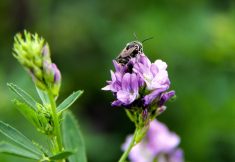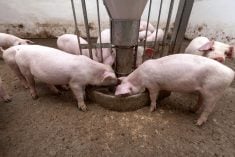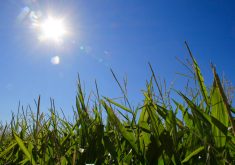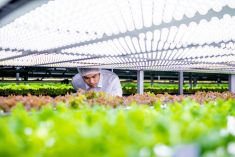Anyone who’s cleaned a feeder or a waterer knows about the fun of getting and keeping biofilm off of surfaces. Now we know why.
Belying their slimy natures, the sticky patches of bacteria called biofilms often form intricate, starburst-like patterns as they grow. Now, researchers at Princeton University have combined expertise in molecular biology, mechanical engineering and mathematical modeling to unravel the physical processes underlying these curious crinkles.
“At a certain point, patterns appear: stripes, zigzags and rings,” said co-author Ned Wingreen, the Howard A. Prior Professor in the Life Sciences and a professor of molecular biology and the Lewis-Sigler Institute for Integrative Genomics. “It’s been one of those things that has personally always puzzled me.”
Read Also

Canada seventh-most influential country on agri-food
Report from Dalhousie University and MNP shows Canada ranks seventh among G20 countries on agri-food influence.
The study, published March 19 in the Proceedings of the National Academy of Sciences, helps illuminate how bacteria grow in diverse environments, and could also aid investigations into the physical forces that govern growth and morphing of human tissues.
“This adds to a body of work coming from a mechanical perspective that says what we’re seeing is the playing out of physical laws,” said Wingreen. “It will help us understand to what extent some of these patterns influence the biofilm properties that are important biologically and medically.”
The work is the latest to stem from a collaboration among four faculty members investigating biofilms from multiple perspectives. Along with Wingreen, the team includes Andrej Košmrlj, an assistant professor of mechanical and aerospace engineering; Howard Stone, the Donald R. Dixon ‘69 and Elizabeth W. Dixon Professor of Mechanical and Aerospace Engineering; and Bonnie Bassler, the Squibb Professor in Molecular Biology. They previously worked together to develop a method for peeling biofilms off surfaces.
In this study, the researchers analyzed biofilm formation of the bacterium Vibrio cholerae, which is widespread in watery environments and can cause the disease cholera when ingested by humans. On a soft substrate, the biofilms initially grow as a flat layer but later become wrinkled, with radial and zigzag patterns of peaks and valleys. The study showed that these patterns depend on the relative softness or stiffness of the biofilm’s substrate, which the researchers manipulated by varying the concentration of agar, a seaweed-derived substance commonly used to fill Petri dishes.
On a stiffer substrate, wrinkles first appear at a biofilm’s center and propagate outward, while on a softer substrate wrinkles begin to form at the edges and propagate toward the center. In both cases, biofilms end up with zigzag wrinkle patterns at their centers and a more ordered pattern of radial stripes at their outer edges.
This process is driven by a nexus of influences, including each bacterium’s uptake of nutrients from the substrate, which leads to uneven growth as nutrients are depleted in the biofilm’s center. The bacteria produce new extracellular matrix components as they grow and they also produce molecules that make the bacteria stick to each other and to the substrate.
In addition to advancing knowledge of how growing cells interact with soft substrates, the researchers plan to build on their findings to further investigate bacterial life cycles, including the dispersal stage in which some bacterial cells detach from a biofilm, exit the structure, and colonize new areas.














